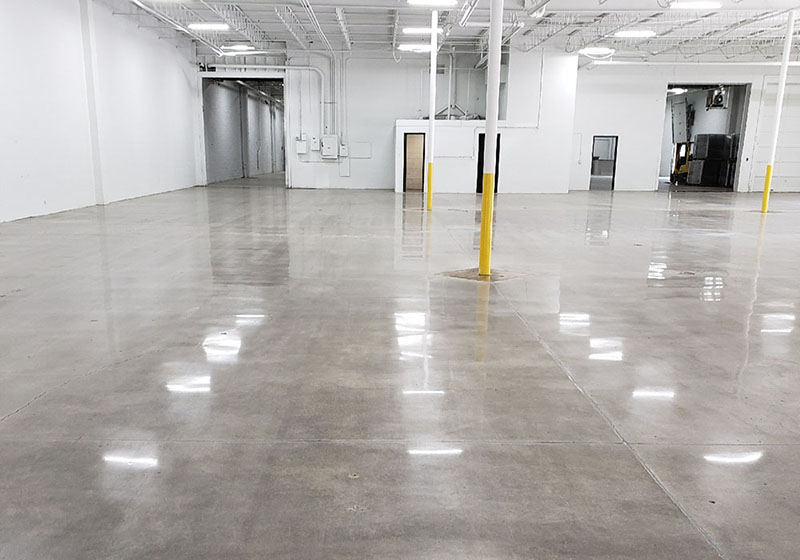How can we help you
Polished concrete is created by repeatedly running specialized industrial grinding machines with ever finer polishing heads across a treated concrete slab to form a smooth, burnished surface. Polished concrete has been treated with a chemical densifier and ground with progressively finer grinding tools. Stain guards are then applied. The grinding tools used are usually progressive grits of diamond grinding pads with diamond Resin polishing pads. Concrete is typically not considered polished before 200 grit. It is usually finished to either the 200, 800, 1500, or 3000 grit level, depending on required gloss level, by high speed burnishing.

If the floor is light to medium general service and will not be exposed to harsh chemicals, extreme pH substances, wet processing, food production or packaging, toxins or potential environmental contaminants and the like, then polished concrete may be an adequate, relatively low-cost solution. However, because polished floors require regular re-polishing or other professional maintenance, they may not be ideal for some 24/7 or mission critical operations; any facility choosing polished floors should be willing to budget for and schedule the rerouting of traffic or cordoning off of work crew areas on a routine basis.
It is also important that the floor not be expected to have a greater compressive strength than the unpolished concrete substrate. Where this is a necessary feature, a troweled epoxy-aggregate flooring system is likely to be the better choice. And while polishing can smoothen and somewhat even out the concrete surface, it is not a viable option for old, cracked or pitted floors with significant imperfections. For best results, polishing should occur on a new, freshly poured concrete slab that has a relatively uniform color and overall appearance.
Depending on the exact procedure and products used, polished concrete can provide the benefit of increasing the floor’s light reflectivity by up to 100%, helping to somewhat improve the efficacy of existing overhead light fixtures and brightening the space overall. And compared to bare concrete, a good polishing treatment will help to stave off concrete “dusting”, thus contributing to better indoor air quality.
What are the Benefits?
Cost Effective due to very long life span and low maintenance, polished concrete is very hard wearing. Due to the fact there is no topical coating on floor you don’t need to worry about product wearing off over time.
Low Maintenance. Each system has cleaning products that are designed to keep floors in great condition for many years.
Traditional Polished Concrete Floor
Concrete flooring is a popular solution for businesses and even homes but there are many ways to achieve a durable concrete solution. Untreated concrete is porous, which means it absorbs chemicals, moisture, and oils which contribute to deterioration and stains over time. Commercial epoxy flooring and polished concrete are the two most common solutions to increase the performance of a concrete floor and protect it from damage. Each option comes with unique advantages and drawbacks. Here’s how commercial epoxy and concrete polishing compare.
Polished concrete is an eco-friendly and economical solution for commercial and industrial flooring. A diamond polishing machine slowly grinds down the surface of the concrete which hardens and densifies the surface. The concrete can be polished to varying levels of shine from 200 grit to 3,000 grit, which is so smooth is looks like liquid. Polished concrete offers many benefits:
— Reduces the environmental impact of the business
— Creates an ultra-smooth and clean surface with nothing that can flake, scratch, or peel
— Hardens and densifies the concrete by up to 40%
— Improves the flatness of the floor
— Boosts light reflectivity of the floor by about 100%
Polished concrete creates a beautiful and durable flooring solution but it’s best for light to medium service floors that will not be exposed to harsh chemicals, wet processing, food production, or environmental hazards. The floor also won’t have a higher compressive strength than unpolished concrete.
The polishing process can even out the concrete surface and remove surface imperfections but it’s not always a viable solution for old, cracked, or damaged concrete.